Caring for Streams
Streamside forestry encompases a combination of practices that prevent or reduce water pollution to a level compatible with water quality goals. In Kansas, streamside forestry includes forest buffers, forest stand improvement, sustainable timber harvest, willow cuttings, tree revetments, and livestock fencing. Water, soil, wildlife and native plants all play a vital role in keeping our streams healthy.
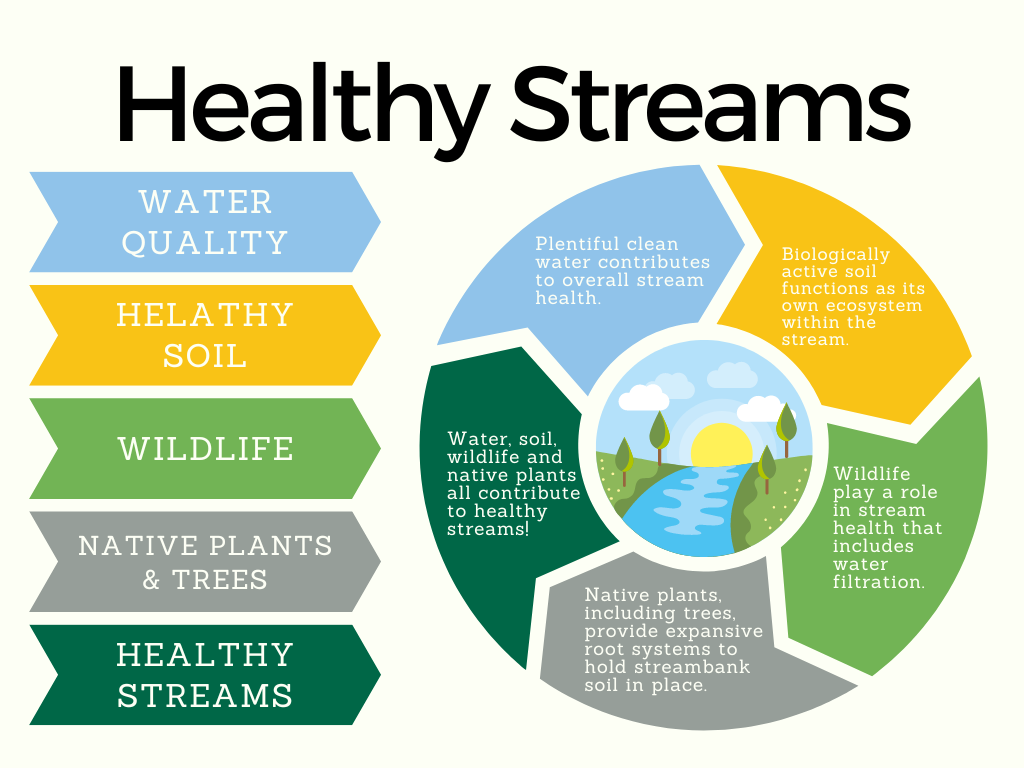
Streamside Forest Buffers
Streamside forest buffers are naturally occurring, or planted strips of trees and/or shrubs located adjacent to streams(both perennial and intermittent) and other bodies of water. The minimum suggested width for forest buffers is a 1 active channel width (ACW) distance from the top streambank, with a minimum distance of 66’ for smaller streams. ACW is the width of the stream channel at bank-full flow, a flow event that occurs approximately once every 1.2 years in Kansas.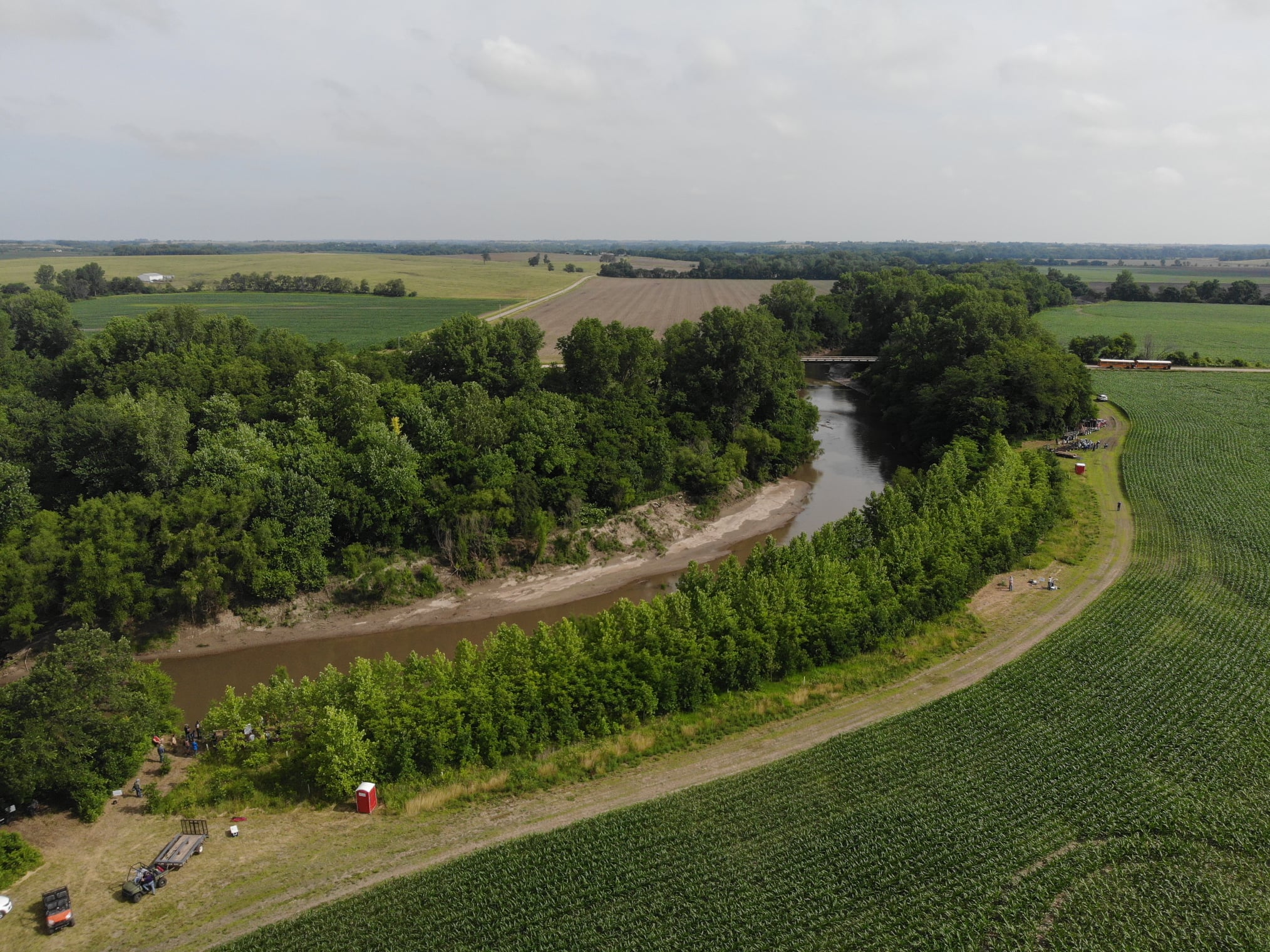
An ideal forest buffer consists of three zones horizontal to the streambank. The first zone, extending approximately 15’ from the top bank, is the streambank stability zone. This zone typically consists of larger trees whose deep roots stabilize the streambank. Management within zone one should be limited to stabilizing the banks and removing problem vegetation. Occasional removal of high-value trees may take place where water quality will not be compromised, and adequate regeneration exists.
The second zone also consists of larger tree species, but is much wider than zone one (a recommended 50’ minimum), and has different management recommendations. The extended width of zone two allows plenty of time for surface runoff to infiltrate the forest floor, removing pollutants before they enter the adjacent waterway. Management for timber harvest and wildlife habitat is recommended in this zone.
The third and final zone consists of dense grasses and forbs, and is located just beyond the extent of zone two. This zone has a minimum recommended width of 15’, and the dense vegetation is intended to slow-down, break-up, and absorb as much overland flow as possible. Mowing or grazing in this zone will help to recycle trapped nutrients and stimulate vegetative growth. Valuable tree species that are adapted to the deep, well drained soils commonly associated with streamside areas include: Bur Oak, Black Walnut, and Pecan.
Two essential rules to make your streamside buffer establishment a success:
- Match the species to the site
- Three years of maintenance (i.e., weed and herbivore control) is critical
Forest Stand Improvement
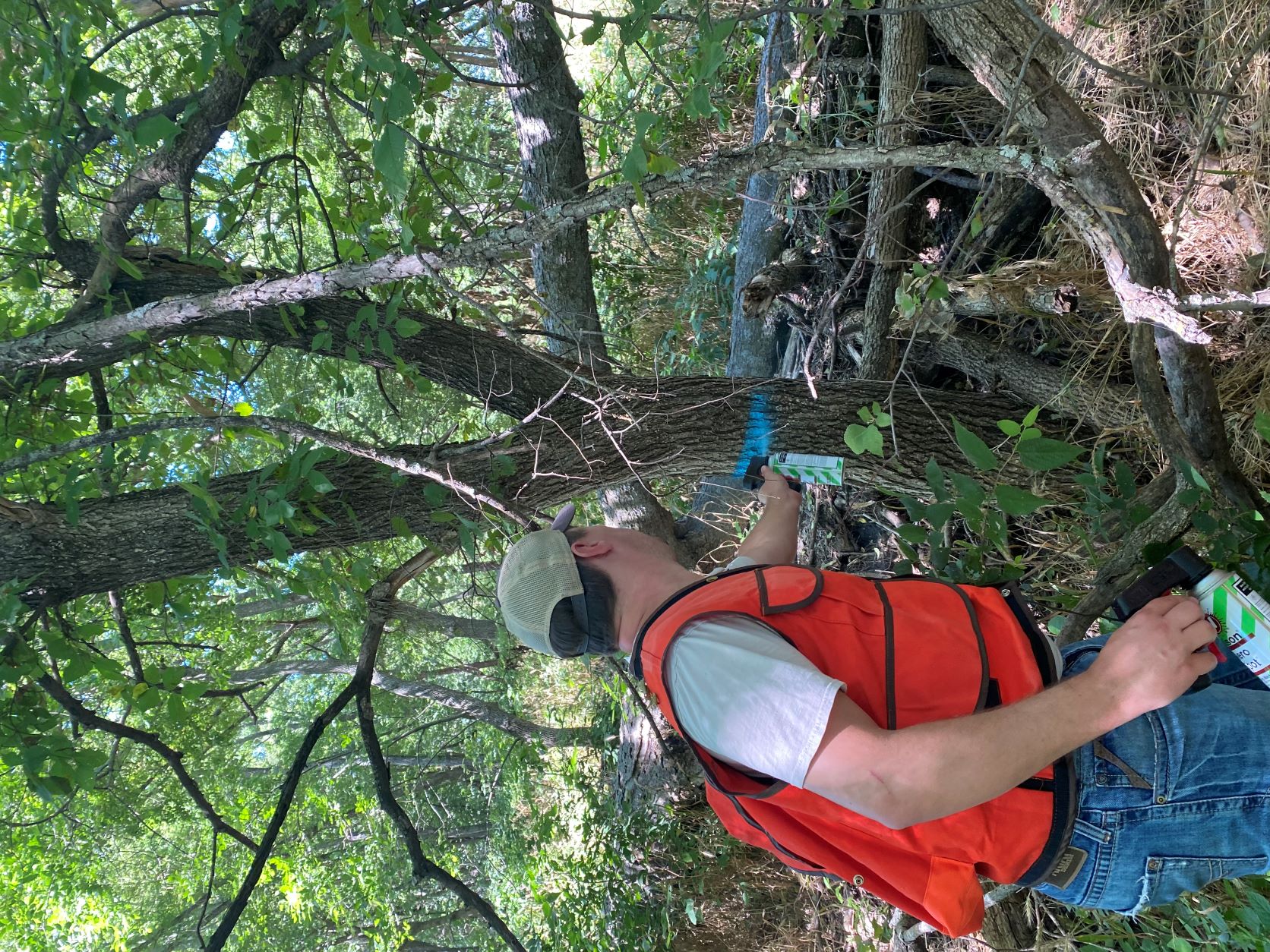 Forest Stand Improvement (FSI) is an excellent tool to help maintain the health of your streamside forest buffer. FSI includes pruning, killing vines, and selection / release of crop trees for future timber harvest, wildlife habitat, or aesthetics.
Forest Stand Improvement (FSI) is an excellent tool to help maintain the health of your streamside forest buffer. FSI includes pruning, killing vines, and selection / release of crop trees for future timber harvest, wildlife habitat, or aesthetics.
When performing FSI in streamside areas, it is important to keep a few rules in mind:
- Minimize disturbance of the forest floor, and keep organic litter layer intact.
- Keep machinery out of stream with properly designed crossings.
- Remove large trees and branches that fall into the stream.
- Properly dispose of woody debris by removing it for other use (i.e., fuelwood), or creating wildlife brushpiles.
- Do not remove more than 25% of trees directly adjacent to the streambank.
Timber Harvest
Timber harvest is a component of sustainable streamside forest management, and can also allow for an added source of income.
When planning a harvest in a streamside forest, consider the following to maintain the integrity of the area:
- Plan roads well.
- Minimize the number of equipment stream crossings, and place at a 90 degree angle to the channel.
- Harvest when soils are dry or frozen.
- Do not remove more than 25% of trees directly adjacent to the channel.
- Remove harvest generated tops and other debris from channel.
- Do not skid trees across stream.
- Stabilize disturbed or bare soil to minimize erosion.
- Restore stream channels to their approximate pre-harvest condition.
- Reseed and replant areas to assure healthy forest in the future.
Willow Cuttings
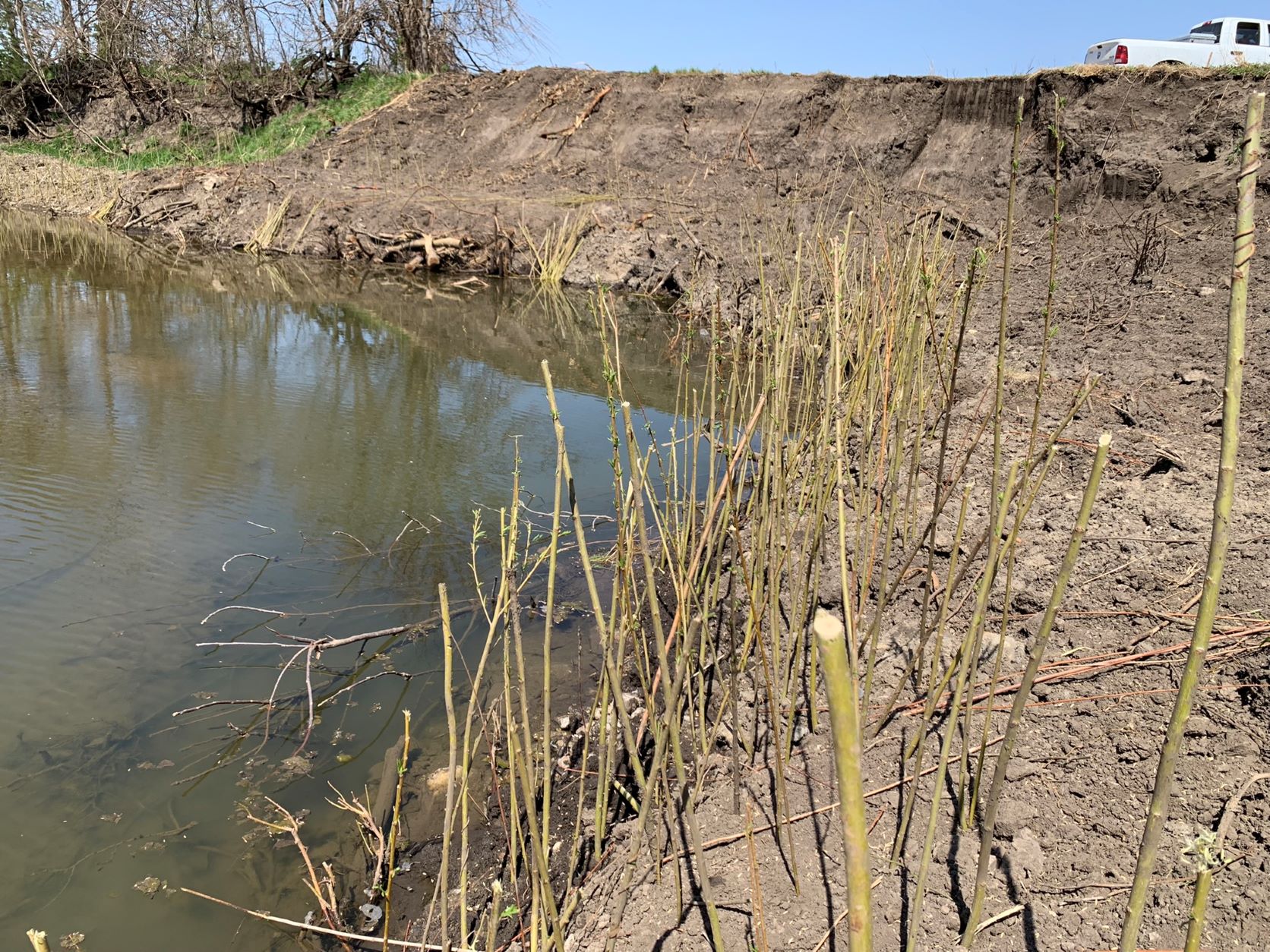
In Kansas, cuttings should be harvested in the dormant season (November to March) and kept hydrated until installed. It is important to plant stakes at a depth that hits the top of the water table.
Tree Revetments
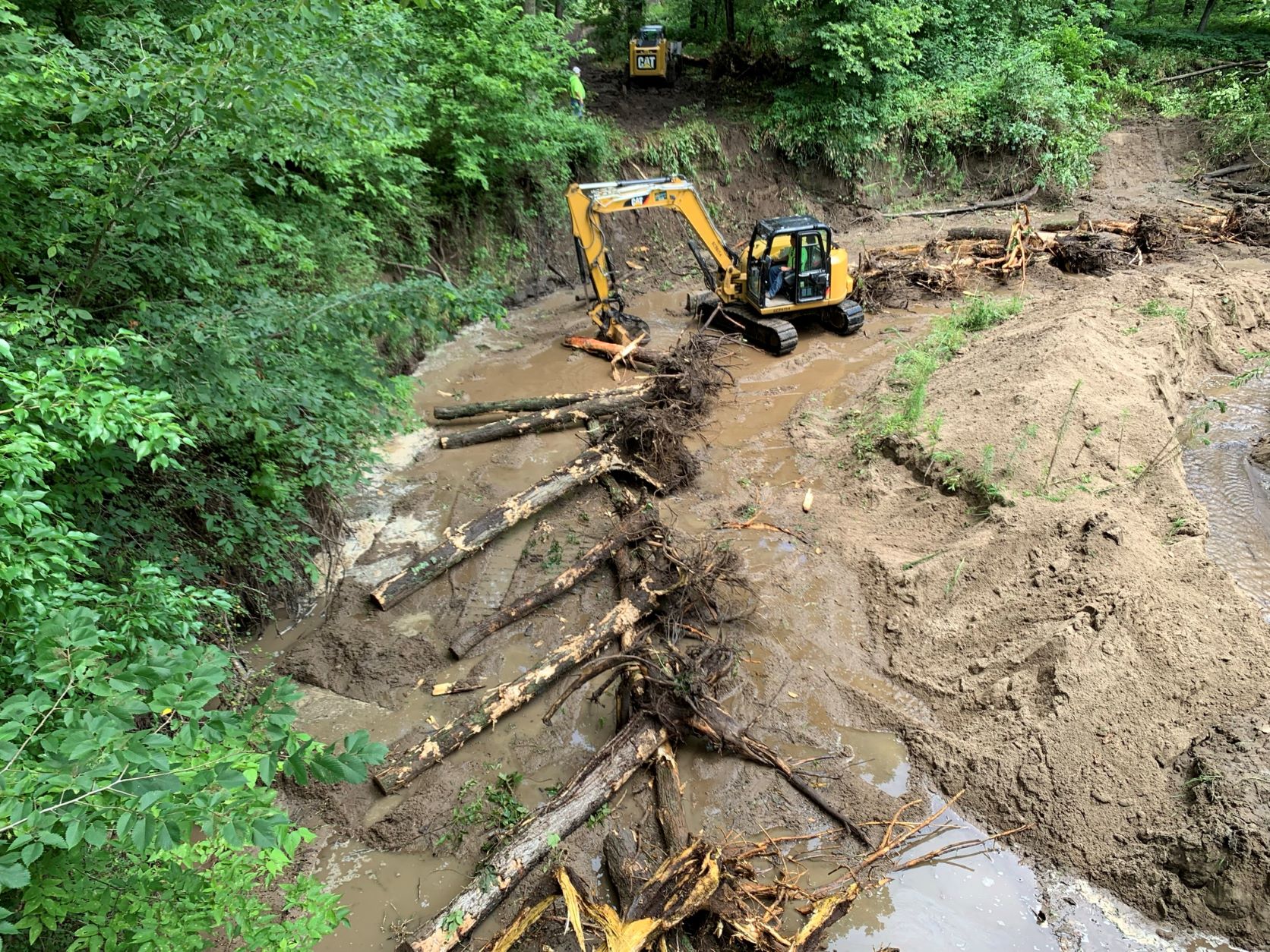
Fencing
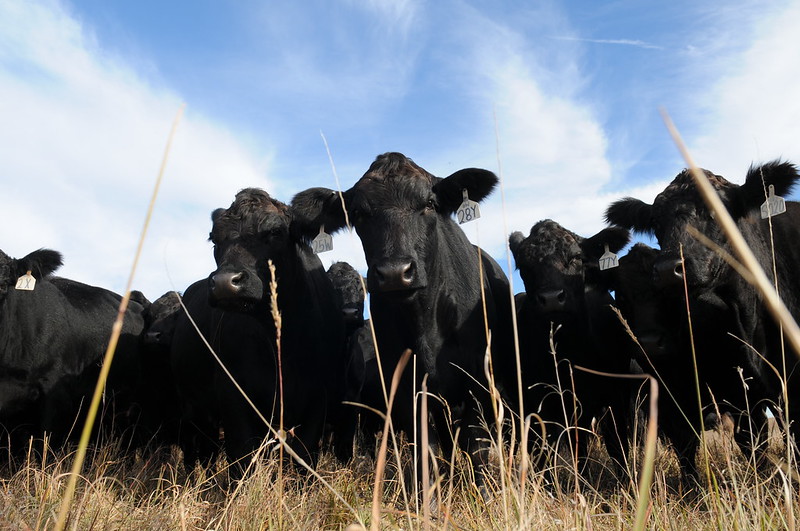 Fencing is a good tool to use to help protect riparian areas from livestock damage. Unrestricted access has the potential to harm seedlings, inhibit reestablishment and growth, compact the soil, and accelerate streambank erosion.
Fencing is a good tool to use to help protect riparian areas from livestock damage. Unrestricted access has the potential to harm seedlings, inhibit reestablishment and growth, compact the soil, and accelerate streambank erosion.
Fences can be used to completely exclude livestock from the riparian area or be part of an overall management system to restrict livestock access to times of the year they are less likely to graze and rub on the trees. Fences can also be used in conjunction with other methods restricting livestock access such as hard water crossings and alternative water sources.